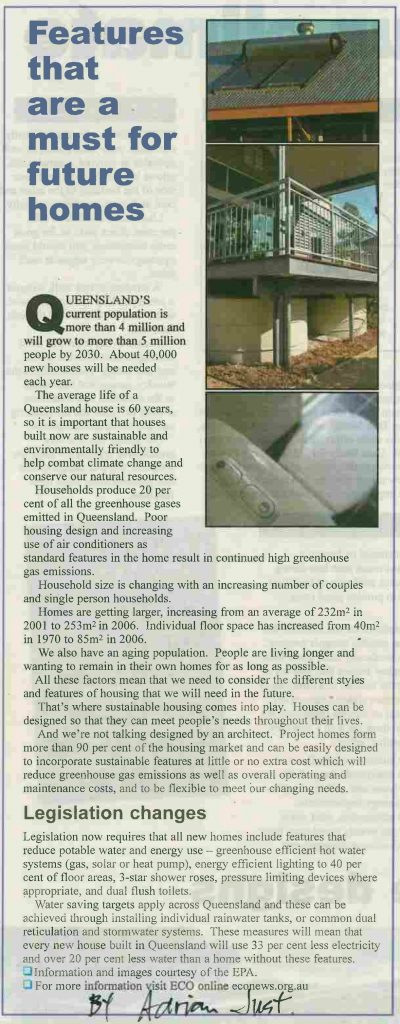
QUEENSLAND’S current population is more than 4 million and will grow to more than 5 million people by 2030. About 40,000 new houses will be needed each year.
The average life of a Queensland house is 60 years, so it is important that houses built now are sustainable and environmentally friendly to help combat climate change and conserve our natural resources.
Households produce 20 per cent of all the greenhouse gases emitted in Queensland. Poor housing design and increasing use of air conditioners as standard features in the home result in gas emissions.
Household size is changing with an increasing number of couples and single person households.
Homes are getting larger, increasing from an average of 232m2 in 2001 to 253m2 in 2006. Individual floor space has increased from 40m2 in 1970 to 85m2 in 2006.
We also have an ageing population. People are living longer and wanting to remain in their own homes for as long as possible.
All these factors mean that we need to consider the different styles and features of housing that we will need in the future.
That’s where sustainable housing comes into play. Houses can be designed so that they can meet people’s needs throughout their lives.
And we’re not talking designed by an architect. Project homes form more than 90 per cent of the housing market and can be easily designed to incorporate sustainable features at little or no extra cost which will reduce greenhouse gas emissions as well as overall operating and maintenance costs, and to be flexible to meet our changing needs.
Legislation changes
Legislation now requires that all new homes include features that reduce potable water and energy use — greenhouse efficient hot water systems (gas, solar or heat pump), energy efficient lighting to 40 per cent of floor areas, 3-star shower roses, pressure limiting devices where appropriate, and dual flush toilets.
Water saving targets apply across Queensland and these can be achieved through installing individual rainwater tanks, or common dual reticulation and storm water systems. These measures will mean that every new house built in Queensland will use 33 per cent less electricity and over 20 per cent less water than a home without these features.







